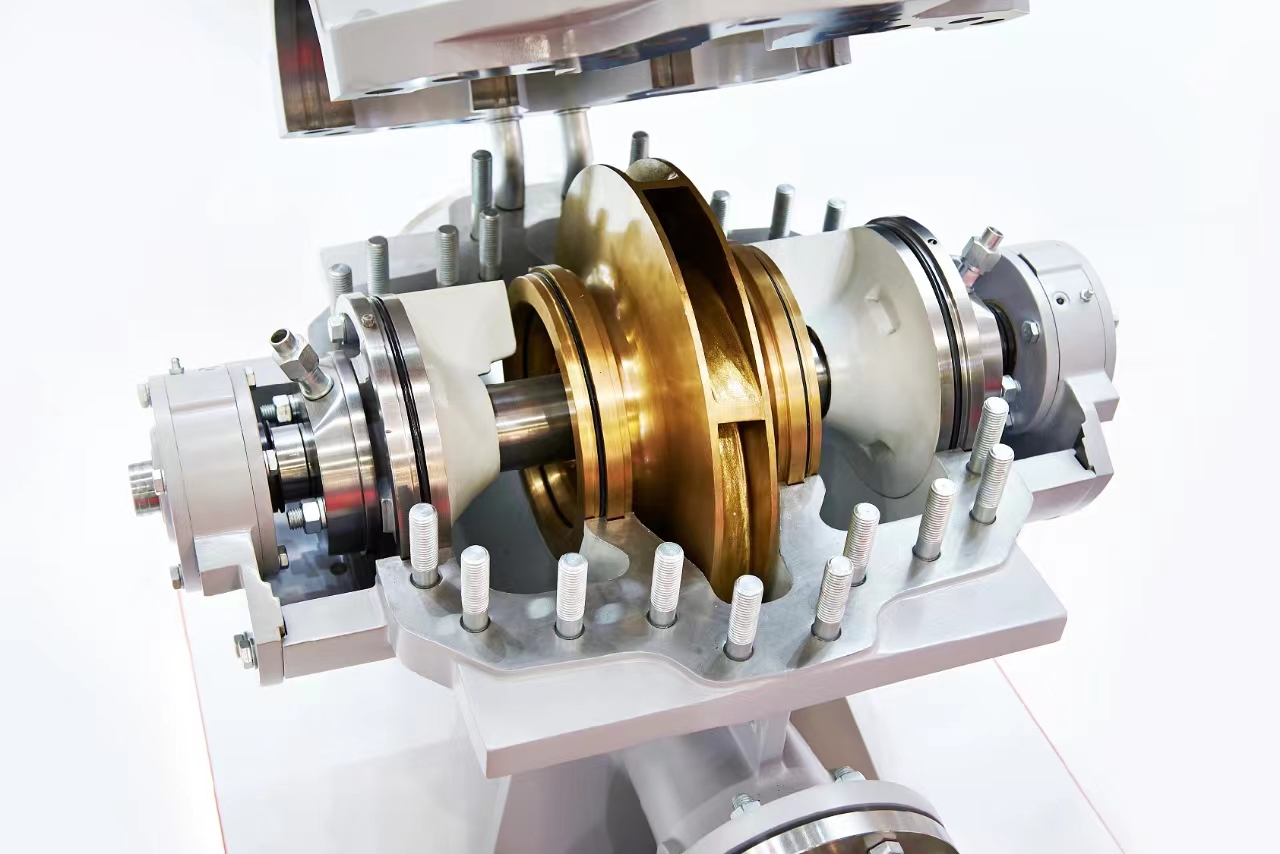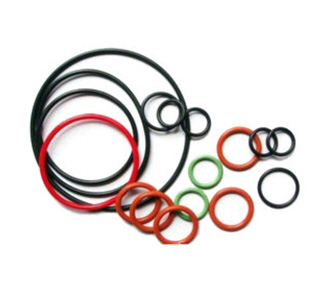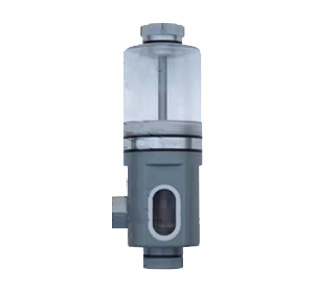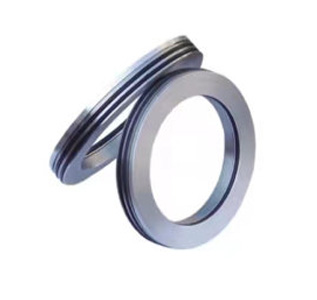NEWS
Company News
An Introduction to the Different Types of Mechanical Seals Used in Centrifugal Pumps
TIME:2023-07-28

=== Preface
Mechanical seals are critical components in pump systems that maintain the integrity of the pump system by preventing fluid or gas leakage and preventing the ingress of contaminants.Mechanical seal systems are used in a variety of seal designs to check for leaks, control the seal environment and lubricate secondary seals.
Depending on the pump type and process, pressure variables, there are a variety of mechanical seal types to choose from.Each seal type has its own unique design and characteristics, making it suitable for the working conditions in the field.
This article highlights the advantages and disadvantages of the different types of mechanical seals used in pumps.
=== Common Seal Types
Mechanical seal types vary in design, installation, and how they determine the pressure of fluid acting on their faces.The most common seal types include:
- balanced seal
- unbalanced seal
- push seal
- non-pushing seal
- Non-cartridge seal
- Cartridge seal
=== Balanced and unbalanced seals
A balanced mechanical seal is a system in which the forces acting on the sealing surface are balanced.Due to lower seal face loading, seal face lubrication is more even and seal life is longer.
Balanced mechanical seals are especially suited for higher operating pressures, typically above 200 Psig (1.4 MPa·G).They are also a good choice when dealing with low lubricity and high volatility fluids.
For more complex balanced seals, unbalanced mechanical seal types are often used (instead of balanced) as a more economical choice.Unbalanced seals may also exhibit less leakage due to tighter control of the liquid film on the seal face, but may therefore exhibit a lower mean time between failures.Unbalanced mechanical seals are not recommended for high pressure or most hydrocarbon applications.
=== Pushing and non-pushing seals
Pusher seals use one or more springs to maintain seal closing force.The spring can be located in the rotating or stationary element of the mechanical seal.Pusher seals can maintain sealing action at high pressures, but have drawbacks due to the elastomer below the primary seal face being subject to wear as it moves along the shaft/sleeve during operation.
Non-pushing seals use metal or bellows to maintain seal closure force.This seal is ideal for dirty and high temperature (or low temperature) applications.Bellows seals are limited to medium/low pressure applications.
Both push and non-push designs are available in balanced and unbalanced configurations.
=== Non-cartridge mechanical seal
Traditional seals are generally less expensive and are usually installed on general purpose equipment.When these seals are installed as separate components, higher operator skill is required for repair kit assembly and self-adjustment by the installer).
=== Cartridge mechanical seal
Cartridge mechanical seals integrate all sealing elements into one assembly.This greatly reduces the possibility of improper installation and the time required to replace the seal.
=== Comparison of non-cartridge and cartridge seals
When selecting a type of mechanical seal, the user must consider installation costs, long-term operating costs, pump characteristics, and expected operating conditions (temperature, vibration, and pressure).Also be aware of the technical capabilities of your maintenance/repair personnel, as having skilled technicians on-site for regular maintenance can make a significant difference versus having to outsource maintenance and repairs.
These factors will determine whether a non-cartridge seal is better than a cartridge seal.
=== Cartridge seal![]()
Cartridge mechanical seals are hermetic seals with pre-assembled components.Usually, this seal type consists of a bushing, gland, sealing element and other accessories, which can be pre-assembled.
advantage:
- Simple and easy to install (no high tech required)
- Higher functional safety and elimination of measurement errors due to pre-assembled seals with fixed axial settings
- Eliminates the possibility of axial misalignment and resulting sealing performance issues
- Prevent dust from entering or damaging the sealing surface
- Lower installation costs by reducing installation time (less downtime during maintenance)
- Reduced excessive disassembly of the pump (pack) for seal replacement
- Manifolds are easy to service
- Protects the customer's pump shaft
- Since the cartridge seal has its own shaft sleeve, there is no need to adjust the shaft to adjust the balance of the seal.
shortcoming:
- The disadvantage of the cartridge mechanical seal is the higher initial cost and the need for a larger space in the pump chamber.
- To design a cartridge seal, it is necessary to provide a large amount of data as support.
=== non-cartridge seal![]()
Non-cartridge (assembly) seals are composed of separate dynamic and stationary parts.Unlike cartridge seals, component seals are not pre-assembled and require a skilled technician to install.Improper installation of the seal faces, O-rings and seal axial settings on the pump shaft will result in shortened seal life and, in some cases, immediate seal failure.
advantage:
- Reduced initial purchase of seals
- Possibility to reduce the cost of spare parts (replacing wearing parts only)
- suitable for very small pumps
shortcoming:
- The main disadvantages of non-cartridge mechanical seals are easy damage and short service life.Non-cartridge seals often have exposed parts that are more susceptible to damage during shipping or installation.
- Non-cartridge seals require precise measurements during installation to prevent leaks due to seal failure.
- It takes more repair time to properly install this type of seal, so it is more expensive to install or reinstall after repair.
=== Mechanical seal selection considerations
When choosing the type of mechanical seal for a pump and its auxiliary system, the designer must make a selection based on its unique application.Failure to select the correct seal type can result in loss of pump (package) integrity, failure and costly repairs.To avoid these undesirable results, designers must consider the following factors before designing.
Type of fluid being pumped
The fluid being pumped is the most important factor when determining the type of seal.
Factors such as cleanliness, lubricity, and volatility will significantly affect the design of mechanical seals and sealing systems.
Pumping fluid pressure
The amount of pressure applied to a mechanical seal face has a significant effect on its performance.If the pump is to operate at low pressure, an unbalanced mechanical seal will be suitable.However, where higher pressures are expected, balanced seals will prove to be a more reliable solution.
temperature considerations
At higher than normal operating temperatures, balanced mechanical seals perform better than unbalanced mechanical seals.Heat sensitive components are better protected in balanced mechanical seals than in other seal types.
Carrier Security Issues
As with all types of rotating machinery, design is a top priority.Using double mechanical seals in any pump will provide additional protection as they increase sealing effectiveness and are generally more reliable.
Previous:Selection of mechanical seal category, seal type and arrangement mode
Next:Guide for selecting mechanical sealing materials
+86-0335-8085559
Junming (Hebei) Machinery and Equipment Manufacturing Co., Ltd.
Address:No.1 Huaihe Road, Qinhuangdao Economic and Technological Development Zone
Domestic:+86-0335-3066990
Overseas:+86-0335-8085559
Domestic:info@junmingmeco.com
Overseas:sales@junmingmeco.com
Website:www.junmingmeco.com
-

官方微信


 Recommendation
Recommendation

